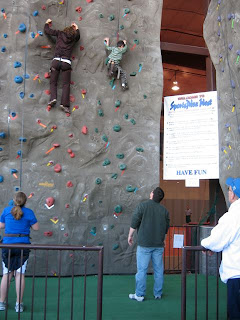The cause of suffering is desire.
The Second Noble Truth reveals that the cause of suffering is desire. The easiest way to demonstrate this to yourself is to go out on a frigid day and endure the cold. If you shiver, cower, and curse the cold, you will suffer much more than if you were to embrace the cold with a mind towards "experiencing" it in a new way. As I often tell my students, if you are constantly looking at the clock during class, you are not making time go any faster - you are, in fact, increasing your suffering by wishing you were in a place that you are not. Time-space dissonance is an insidious poison that has gotten exponentially worse as we embrace an ever-increasingly multi-tasking lifestyle with cellphone and iPod in hand. Rarely do we truly embrace what we are doing right now.
The desire-suffering connection manifests itself in our daily lives in both mundane and central life events - an obese person, struggling to lose weight, eats to fill an emotional void; an adult, battling depression, still wishes for parental acknowledgement and approval; a teenager insecure with his social circle, turns to illegal drugs to anesthesize themselves; a father, stressed about his job, ignores his children's pleas for attention; a store clerk, angry about a rude customer, greets their next customer coldly... and so it goes.
* * * * * * * * * * * * * * *Since developing an interest in girevoy sport ("GS"), where the athlete performs snatches and jerks with one or two kettlebells, each weighing 70lbs, for 10 minutes straight, I've struggled with the ability to sustain sets longer than three to five minutes. I've known for some time now (about a year actually) that to properly train for GS, the general protocol is to do long, slower-paced, timed sets with lighter weights if necessary. But, this fundamental paradigm shift took an embarrasingly long time for me to grasp.
At the IKFF/NAKF Nationals in July, I met Chris Duffy - a big, strong man with a Boston accent. During the meet, he made a point of saying "We try to extend the time we can work first, and
then add reps." I don't exactly know why he said that
to me, but I'm guessing it had something to do with the fact that my jerks took about two minutes and my snatches about 4 minutes - in other words, of my alloted 20 minutes of opportunity, I used about one-fourth of it. My numbers were nothing to write home about, but they were acceptable and my technique was relatively solid, so I continued training as usual.

Many fast-paced training sessions later, I realized that they were not helping my cause by any substantial measure - a rep or two here and there on a very inconsistent basis was not (and is not) going to lead to breakthrough performances in GS. For me to get it, I had to look at it from a (Buddhist) perspective of
acceptance. This lessened the suffering of long duration sets by eliminating choice.
The paradigm shift was a subtle, but profound, one for me. I can sum it up as follows: I went from a "density-focused" training approach (
"I'll try to go five minutes continuously and see how many reps I can get.") to an "expansion-focused" training approach (
"I'll go five minutes even if it's at a snail's pace and I get very few reps."). I use "expansion" here because the goal is to stretch your repetitions to fit the allotted time, rather than cram more reps in. Training density is later added as going the distance becomes less of a concern.
"Fighting through it" is not the right mind-set for GS training. If you are to get through it at all, an adversarial attitude will spike your heart rate and make breathing even more labored. It is NOT an "embrace the pain" mind-set either as a preoccupation with discomfort will only fan its flames. Rather, it is the acceptance that pain and discomfort are inevitable and a sense of detachment to the end result that allows one to not be consumed by them.
The cause of suffering is desire.










